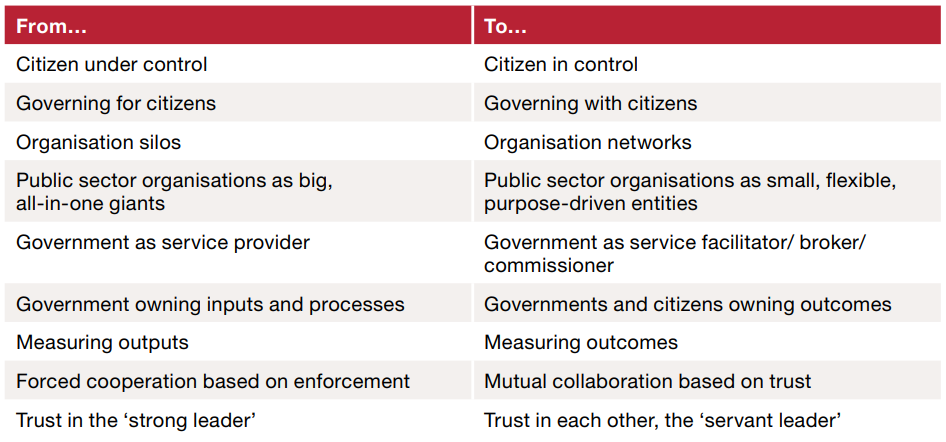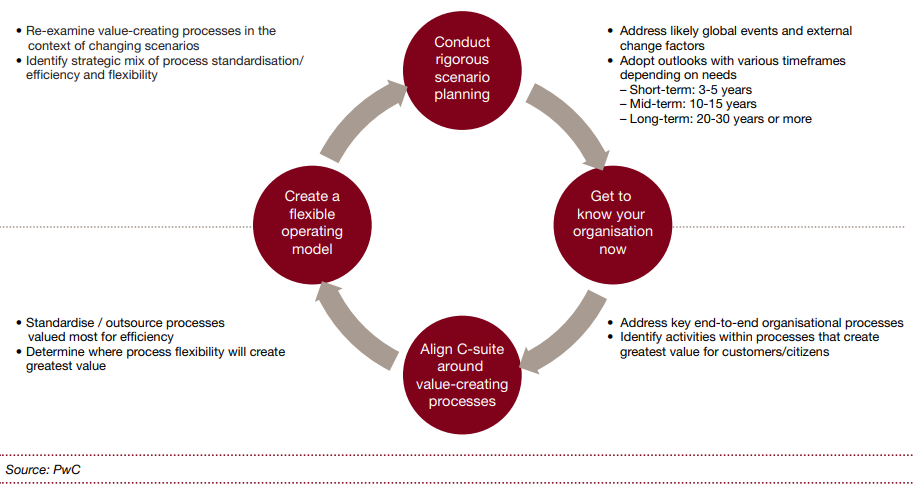Summary
PricewaterhouseCoopers (PwC) released a report outlining a future vision of the public sector and a action plan for change. It argued that Governments will need to change to be more like a “living organism” – adapting to change and evolving to address the needs of society as they develop. As part of this transformation, core pillars are identified, including citizen-centricity, innovation, agility, connectivity and transparency.
“Government and public sector organisations world wide must adjust to the new reality of ‘doing more for less’ (or ‘doing less for less’) and focus on the outcomes society needs and wants. Public bodies must also decide if they want to consume the legacy left behind by predecessors, or create a new legacy for the next generation.
In our view, partnering, co-venturing, co-creation and co-design are the new ‘must-have’ capabilities, and agility, innovation, connectedness and transparency the characteristics and behaviours needed by the public bodies of tomorrow.“

Key Points
- The paper outlines a number of different ‘lenses’ which will need to help guide public sector behavior, including:
- Citizen-centricity
- Internal-external balance
- Sustainable outcomes
- Four key characteristics are identified which it argues that future public sector organizations will need to exhibit, including:
- Agile
- Innovative
- Connected
- Transparent
- It defines agile for the public sector as: “Able to anticipate situations, as well as adapt and react optimally to unforeseen events, in a speedy and cost effective manner providing needed responses in the short term without compromising long term options. Agility in turn reinforces organisational resilience.”
- It outlines how to create organizational agility, including through the following blueprint:

Links
- PwC Future of Government
- PwC Future of Government – The road ahead for public sector delivery (report)


No responses yet